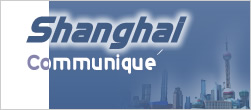| Home / International / International -- Opinion | Tools: Save | Print | E-mail | Most Read |
| 'Transplants' a Way for China to Work with US |
| Adjust font size: |
Thinking beyond When Chinese Commerce Minister Bo Xilai addressed business and government leaders at a Chicago Council on Global Affairs luncheon in He spoke at a time when some US politicians and labor unions blame China for taking away manufacturing jobs and say that the US$232.5 billion trade deficit with China is caused by the undervalued yuan. At the same time, it is also widely recognized that US consumers have greatly benefited from low-cost Chinese imports to maintain their high standard of living. And In today's division-of-labor global economy, however, the Instead, it is apparent that the Some insight into these options was provided in US Treasury Secretary Henry Paulson's closing statement summarized: "The The mutual benefits desired can come, in part, from For example, to diversify the country's US$1.2 trillion foreign exchange reserve holding, And, at the May 15 Chinese Enterprises Outbound Investment Conference in Beijing, Zhang Xiaoqiang, vice-minister of the National Development and Reform Commission, indicated that Chinese government entities will provide diplomatic, foreign exchange, tax, customs, credit, insurance and other support to Chinese overseas investment in targeted industries. The Chinese investment in the If both sides can gain such great benefits, what are we waiting for? As Minister Bo said in His observation reflects Chinese culture, which focuses on prudence, doing things step by step. It's all about proceeding with caution by securing a base before taking the next step. This prudence was displayed in the successful entry into In 1999, the Haier Group created Haier BYD Company set up BYD America in 1999. By 2000 it was Motorola's first Li-ion battery supplier in These Chinese companies successfully entered the Chinese enterprises, at least at present, are in a risky position when dealing with business-savvy economies, particularly in markets outside their home turf. Nevertheless, this is a step However, with the marketplace rapidly changing, Chinese companies now need a more time-efficient model than the seeding model. This new approach could be called the "seedling transplant model". It would be a lot more appropriate for a Chinese firm to use this faster-moving model to succeed overseas in the current global economy. The seedling transplant model calls for the transfer of a success-proven product or service from one geographic location to another, or from one industry to another. Such a seedling, even a strong seedling, is not yet a full plant, so should be shielded from predators at the early transplant stage. The transplanted product needs to be watered, fertilized, and protected so that it can take root, spread out, grow and be able to stand alone. A Chinese seedling company must be protected by an appropriate local partner in the foreign market - a partner that is able to offer the Chinese enterprise insight, assistance and support to swiftly align the Chinese company in the new foreign market. For agricultural plants, it is important to find a place to transplant that will give enough space and light for the plant to grow - above and below the ground - to its full size. For a Chinese company to succeed in the seedling transplant model, the potential market should be big enough and open enough for competition, for the transplanting product to take root and grow. Successful transplant means the product gets known, accepted, desired, and secures respect and good sales in its transplanted market. The perfect opportunity for seedling transplant does not come easily because leading local players often close out newcomers to protect their market. An example of a great seedling opportunity currently exists for the Chinese in the US$3 billion global market for surveying instruments and GPS (global positioning system) equipment. If Chinese players can gain a foothold in this market, the ventures will be highly profitable for managers, employees, and shareholders by taking such innovative enterprises public. The global geomatics' market is dominated by three top players that are all publicly traded companies: the US Trimble Navigation, the Swiss Leica Geosystems and the Japanese Topcon. They all came to their size and power - with respective market capitalization of US$3.54 billion, US$2 billion, and US$1 billion - through mergers and acquisitions, knowledgeable management and access to sales channels. They have used They are not hiding their efforts to destroy competition. Their numerous merger and acaquisition activities help expand their product line and competitiveness while closing out any opportunity for the emerging Chinese manufacturers to get into the market. The door to the As Minister Bo emphasized to American business and political leaders in A Chinese team winning in the global geomatics market helps Chinese survey instrument manufacturers need to find ways to transcend their position - to offer a showcase to other Chinese enterprises - and they need to do it soon. The seedling transplant model is an innovative technique that can lead to success. The author is managing director of Chicago-based Royal Roots Global Inc, a US-China business advisory firm ( |
| Tools: Save | Print | E-mail | Most Read |
 |
| Related Stories |
 |
 |
|
 |
| Links |